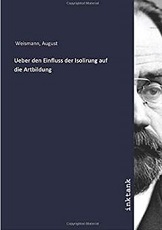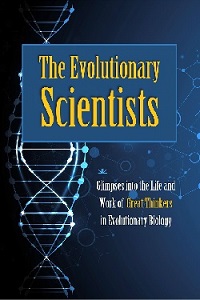|
TRANSLATE THIS ARTICLE
Integral World: Exploring Theories of Everything
An independent forum for a critical discussion of the integral philosophy of Ken Wilber
 David Christopher Lane, Ph.D.
Professor of Philosophy, Mt. San Antonio College Lecturer in Religious Studies, California State University, Long Beach Author of Exposing Cults: When the Skeptical Mind Confronts the Mystical (New York and London: Garland Publishers, 1994) and The Radhasoami Tradition: A Critical History of Guru Succession (New York and London: Garland Publishers, 1992). David Christopher Lane, Ph.D.
Professor of Philosophy, Mt. San Antonio College Lecturer in Religious Studies, California State University, Long Beach Author of Exposing Cults: When the Skeptical Mind Confronts the Mystical (New York and London: Garland Publishers, 1994) and The Radhasoami Tradition: A Critical History of Guru Succession (New York and London: Garland Publishers, 1992).If there's a singular topic Integral students need to be educated on it is evolutionary theory, given their frequent but uninformed use of the term "evolution". These short biographical chapters about evolutionary theorists have been written by different philosophy students of professor David Christopher Lane. (FV)
THE EVOLUTIONARY SCIENTISTS
Glimpses into the Life and Work of Great Thinkers in Evolutionary Biology
Coyne|
Crick|
Darwin|
Dawkins|
Diamond|
Dobzhansky|
Eldridge|
Gould|
Haldane|
Hamilton |
Lamarck|
Lovelock|
Mayr|
Mendel|
Monod|
Spencer|
Trivers |
Wallace |
Weismann |
Williams |
E.O. Wilson
August WeismannDenise MotusAugust Friedrich Leopold Weismann (January 17, 1834–November 5, 1914) was a German evolutionary biologist who studied and experimented extensively on Charles Darwin's and Jean-Baptiste Lamarck's respective theories of evolution. Weismann was the son of Johann Konrad August Weismann, a classics professor, and Elise Eleanore Lübbren, a musician and painter. As a child, Weismann would collect different kinds of insects and herbs. This hobby proved to be lifelong as he explored evolution in nature as an adult. To his dismay, he took up medicine despite favoring subjects such as physics, chemistry, and botany because of his father and a family friend's advice on the practicality of earning a living. He eventually received his medical degree in 1856. In 1861, he was so in awe of Darwin's On the Origin of Species that he read it in one sitting.  August Weismann Practicing medicine did not hinder Weismann from his other interests. He found time to study insect development and metamorphosis among other research. Finally giving in to his childhood passion, Weismann focused on zoology. He spent most of his career at the University of Freiburg where he became a professor and the first to hold a chair in Zoology. In 1864, his eyesight declined leaving him partially blind and unable to use the microscope effectively. With the help of his wife, Marie Dorothea Gruber of Genoa, Italy, he was able to continue his work on six memoirs on insects. He and his wife had six children with whom they shared their many interests including music. As a strong proponent of Darwin's theory of evolution, Weismann promoted Darwin's ideas and added his own theories about evolution. Among Weismann's theories, he is most known for the germ-plasm theory. He agreed with Darwin regarding natural selection depending on four factors namely variability, inheritance, selection for breeding, and struggle for existence. The last factor in particular was special due to its organic occurrence in nature. Species do not compete only against other species for space and food. Members of the same species have to compete with each other for limited resources. Regardless of the degree of fertility, only a few descendants of a species would survive. The rest would succumb to the dangers of nature. The principle of natural selection then is what is fit to reproduce. This may refer to the organism, one or more parts of the organism, or even stages of an organism's development. Despite praising Lamarck's investigative endeavor, Weismann concluded that the Lamarckian principle of use and disuse leaves so much room for doubt and shows no proof of inheritance. Muscles, nerves, and bones build up strength in proportion to how much they are used. Conversely, they become frail as they are used less. Weismann questioned how this could be the case for animals that are sterile and, therefore, could not transmit anything to their offspring. He deducted that the Lamarckian principle is wrong and ultimately obstructs potential deeper insights about evolution. For example, the worker ants in certain ant colonies are sterile. They do not reproduce, yet the workers have undergone a positive modification – brain development. Larger workers called soldiers have evolved massive jaws and teeth to defend the colony from enemies. Lamarckian principle simply could not explain the evolution of brain or jaws.
 Weismann surmised that selection takes place in the germ-cells of the father and mother ant workers. Males and females have special complexes of primordia and these complexes contain determinants. Determinants vary; female eggs may produce favorable varying determinants that could give rise to workers that have undergone positive modification. The germ-plasm theory, also referred to as germinal selection, builds the foundation of variation which natural selection is based on. The rods, bands, or granules form the germ-plasm within the nucleus of the germ cell. The individual granules are called ids. Each id plays a role in development and, therefore, several ids would contribute to the growth of a new individual. According to Weismann, the determinants vary in the course of development by growing and dividing rapidly or slowly. The variations in the determinants consequently correspond to variations of the cell, tissue, or organ they designate. In the case that a determinant receives abundant nourishment in a considerable time (which in turn will make it grow rapidly and divide quickly) then the id that develops in the embryo will become stronger than in the parents. This demonstrates hereditary individual variation arising from the germ. Positive or negative selection then favors variations that are advantageous and neglects those that are disadvantageous. Similarly, lack of nutriment weakens the determinants leading to minimized growth. One of two things may happen: a) if the determinant is associated with a useful organ, it must be removed to bring back germ-plasm equilibrium, or b) if the determinant corresponds to an organ that has become useless, the organ becomes vestigial or may just disappear over time. The id's determinant system is in a continuous fluctuating trend. Weismann believed that when a part of an organism stops being of use, natural selection withdraws its influence on it. The part ceases from evolving because it does not need to adapt any longer (2). Weismann also agreed with Darwin's theory of sexual selection. Sexual selection applies only to those who could already reproduce. It stems from the rivalry of one sex for the attainment of the opposite sex. The rivalry affects the sex (usually the male) that pursues the other (usually the female) by equipping the former with unique characteristics that will make it a more ideal mate for the latter. One of the postulates of sexual selection is the unequal number of individuals in the two sexes of the same species. Typically, males have to compete with other males to secure a female. A male would have to be stronger, faster, or more beautiful than the other males in its species to woo a female or several females. The males who were successful in attracting females would have more progeny and, therefore, potentially pass on the determinants that made them desirable. Following on Darwin's footsteps, Weismann embraced Darwin's theories and took it up a notch. Naturally, his advanced ideas did not convince everyone, especially at a time when the Lamarckian principle was extremely popular. His germ-plasm theory generated controversy for going against Lamarck's theory. To prove that Lamarck was wrong, Weismann severed the tails of more than a thousand mice. If the mice reproduced offspring with short tails, then Lamarck was right. Conversely, if the offspring had full tails then it would prove that he was right. It turned out that his prediction was correct and so he proceeded to research about variation and heredity. However, Weismann's germ-plasm theory was not necessarily complete. He believed that germ-plasm passed on from one generation to the next without changing and variations came from new germ-plasm combinations (3). With the discovery of the chromosome and its function, Weismann's ideas found renewed support. There was now a physical unit that housed the germ-plasm. Germ-plasm, which would later be known as genes, contains hereditary material that could be passed on to the offspring unlike other cells (somatic cells) that did not influence heredity. Further Reading1. Evolution and Natural Selection: August Weismann on Darwin and Lamarck, MSAC Philosophy Group, April 14, 2018 2. The Germ-plasm; a Theory of Heredity, BiblioLife (September 29, 2009) 3. Über Den Einfluss Der Isolirung Auf Die Artbildung, Inktank Publishing (12. November 2019)
  
MSAC Philosophy Group
The theory of evolution has a long history. However, it was not until Charles Darwin and Alfred Russel Wallace discovered that the wide variety of species we presently see were largely the result of natural selection did evolutionary studies have a solid, scientific basis. In the past one hundred and sixty years, a number of eminent biologists have contributed to our understanding of how complex life forms emerged from simpler, more rudimentary ones. Comment Form is loading comments...
|